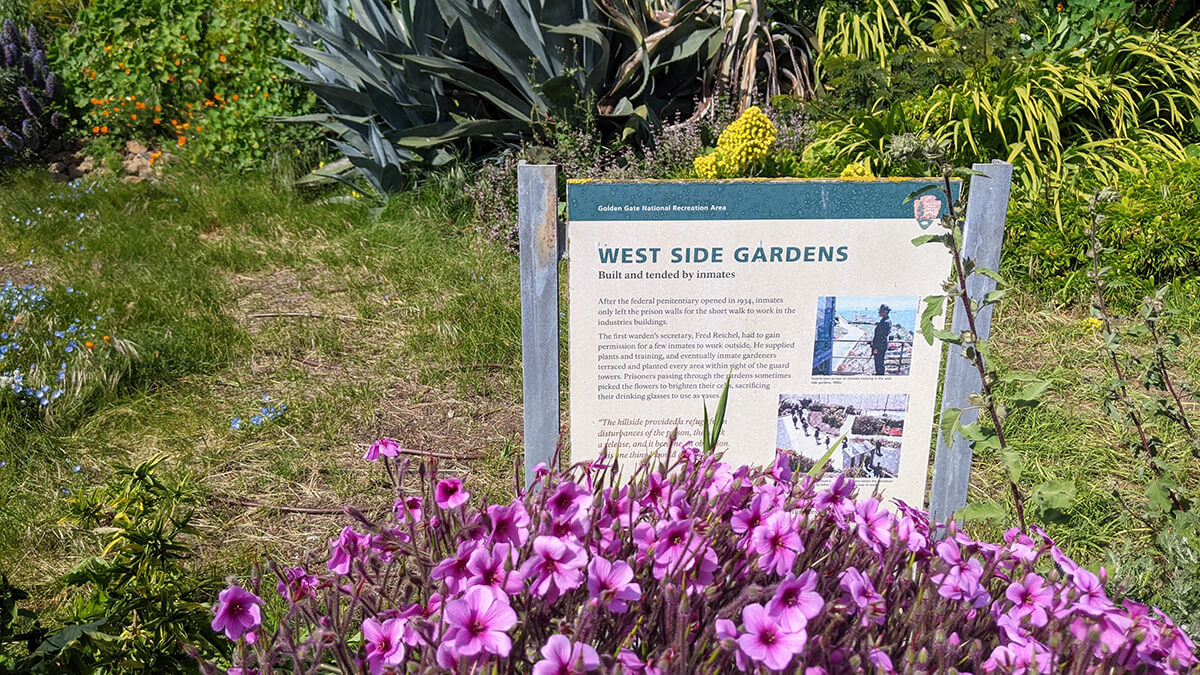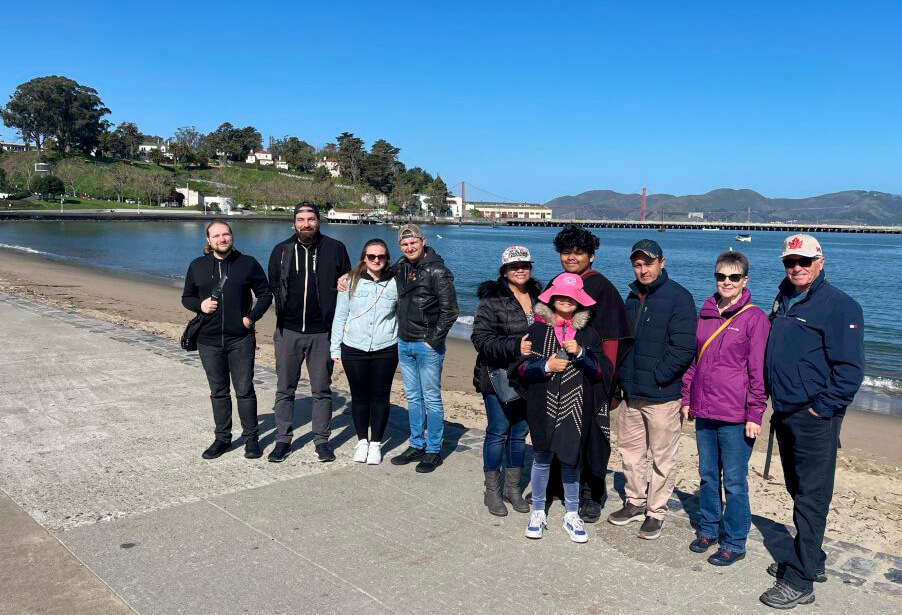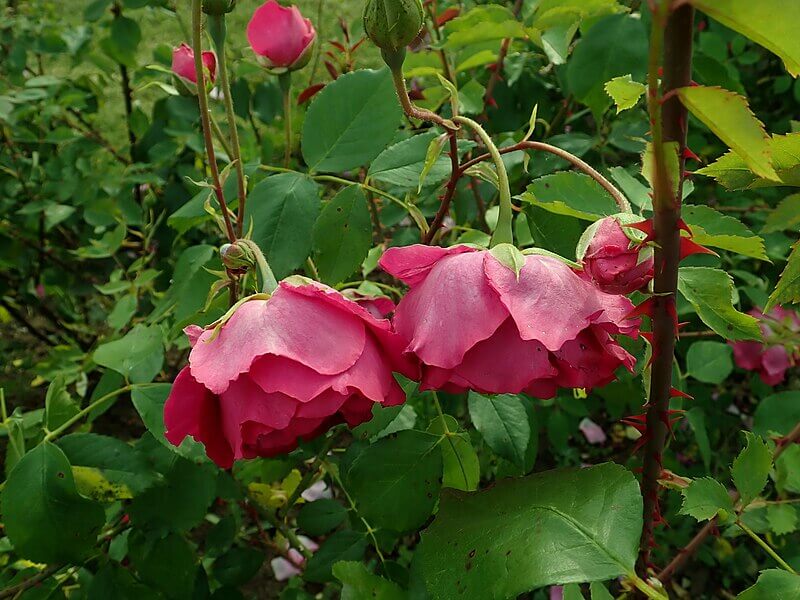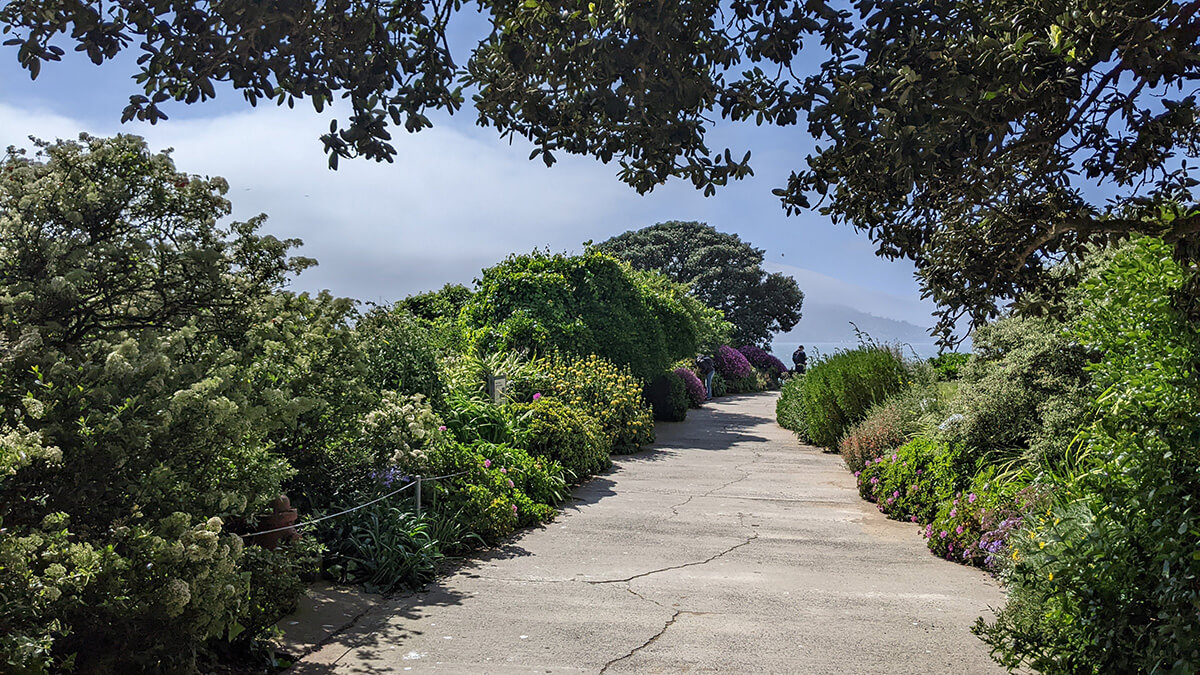
Alcatraz Gardens: When To Go and What’s in Bloom
Alcatraz Island is famous for the harsh, rugged landscape that inspired the construction of one of the most notorious prisons ever constructed. But less well-known is that even with the incredibly inhospitable terrain, a not-to-be-missed aspect of the Rock are the gorgeous gardens that have been cultivated there for over a hundred years– a fascinating and beautiful remnant from bygone days.
Today, among the thousands of people who come every year to visit this National Historic Landmark, many make it a special point to see the gardens, which were recently restored after 40 years of neglect in 2003, and have their own story to tell about the resilience and ingenuity of both nature and the human spirit.
Want to see the Alcatraz gardens? Curious when is the best season to visit, what wildlife you might be able to spot, or how to plan your visit? Keep reading. I’ll cover all that and more in this post.
Why are there gardens on Alcatraz?

The Alcatraz gardens were tended first by the military wives of the officers stationed there, who were cut off from San Francisco’s bustling gold rush era social scene by the turbulent waters of the Bay. Laer, they were tended by the staff and inmates of the prison. These gardens, filled with roses, herbs, fruit trees and carefree wildflowers, were small but powerful beacons of hope and sunshine in a place well-known for being stark and grim.
The gardens of Alcatraz are made up of seven unique parcels, scattered across the Rock like a patchwork quilt overlaying the concrete and barbed wire remains of the fortress-like penitentiary.

The same conditions that made the prison formidable for the inmates once held there — the steep cliffs, the rocky, uneven terrain, the cold, salty wind, the unyielding fog and mist — make it an unlikely place for most of the plants we think of as “garden plants” to thrive.
And yet, here we are today — with beautiful gardens on Alcatraz.
Through the work of countless hands over many generations, from the convicts of Al Capone’s era to the volunteers who tend the terraced gardens now, this island has become a place of improbable beauty and a safe haven for wildlife.
When to visit Alcatraz Gardens and what to see

There really isn’t a bad time to visit the Gardens of Alcatraz.
In spring, the Officers’ Row and Warden’s Gardens will enchant you with the scent of pink nicotiana, paperwhites, and plush purple irises. While your friends are posting yet another super-bloom photo surrounded by endless California Poppies, you can one-up them with snaps of terracotta and gold calendulas, spires of foxglove, and sweet peas that feel like they come right out of a fairytale, instead of a prison.
In summer, in addition to the bounty of blooms you’ll see in the Rose Terrace, you’ll find the magenta and pink petals of four different types of fuchsia scattered around the island.
Local tip: Don’t miss the birdbath area in the Prisoner’s Garden, where you may stumble upon a carmine and emerald Anna’s hummingbird, drawn in by the nectar of pineapple sage, frilly geraniums, and vintage ‘Bowles Mauve’ wallflowers.

Then in autumn, the summer crowds die down. The temperature cools, and you’ll be able to walk among apple and walnut trees beginning to bear fruit, surrounded by the milk-and-honey tufts of blooming coyote bush and plum-perfect dahlias. Many of these trees are over 100 years old.
You can also take part in the annual Thanksgiving Day events on Alcatraz Island, which have deep roots in the Native American civil rights movement of the 1960s and 1970s.
Winter might not seem like the best time to visit Alcatraz, but if you’re willing to brave the bracing cold winds, you’ll find that this one of the few times of the year that the seemingly-omnipresent San Francisco Bay fog completely disappears, guaranteeing you gorgeous views of both the Golden Gate Bridge and the city skyline from the island.
It’s also the only time of year you can hike the little-known Alcatraz Agave trail, which begins just south of the ferry dock and is only open September through February. The spiky succulents which give this little-known trail its name tower over 40-feet tall, and have an interesting historical element of their own — they were planted in 1930s and ’40s by prison guards and their families both for their stately beauty, and as a way of keeping would-be accomplices of potential escapees from landing boats on the shores of the island.
Tour Alcatraz Island and more

Alcatraz Island is one aspect of the seedy underbelly of San Francisco’s history, which also includes the red-light district known as the Barbary Coast Trail and the wild escapades of the Gold Rush Boom.
The entire waterfront of the city has a rich and colorful history, from the small stalls of seafood that sailors have kept stocked with dungeness crab and salmon for generations to the once tiny chocolaterie that eventually became known as Ghirardelli Square. You can see all of this and take the ferry to Alcatraz as part of our walking tour.
The lost roses of Alcatraz

Credit: Salicyna / CC BY-SA 4.0 DEED
The most beloved of the seven gardens on Alcatraz is probably the Rose Terrace.
Whether you’re a budding rosarian, a history buff, or simply want to take cool photos for your Instagram feed, you’ll want to make it a point to visit in summer. This is when the roses put on their best display and when you can see the rich crimson bloom of ‘Bardou Job’ — a rose thought to be extinct until it was found among the weeds and blackberry brambles on Alcatraz Island.
‘Bardou Job’ is still among the rarest of about 100,000 known rose varieties, but it isn’t the only rare, historic rose on the Rock.
Today over 30 varieties of antique roses are cultivated in the Alcatraz Gardens, from ramblers such as ‘Russeliana,’ first introduced on the island in 1837 and still thriving today, to the sumptuous tea rose the color of a mango lassi, ‘Buff Beauty.’ The seasonal flower show begins in May and continues for months, until mid-autumn or longer, depending on the weather.
Over a dozen of the roses on the Rose Terrace and spread throughout the Alcatraz Gardens are what are known as “survivor plants.” These are plants originally grown by the wives of military officers in the late 1800s or by staff or inmates of the prison before it was closed in 1962. They somehow survived until 2003, when the Garden Conservancy began restoring the gardens.
Enjoy your visit to Alcatraz

While strolling through the gardens of Alcatraz, it’s tempting to overlook the island’s dark history — the long years of confinement, the ongoing struggle for justice. However, each era of its past is mirrored in the gardens, like the Prisoners’ Garden with fruit and food and the meticulously maintained cutting-flower beds tended by military wives.
Today, Alcatraz is a blend of these varied histories, where remnants from the past converge among the weathered brick ruins and rugged sandstone, lovingly preserved by garden volunteers today.
Curious about the details of getting to Alcatraz and how to get the most out of your visit there? Your SF tour guide is a great resource for learning more about Alcatraz Island and the surrounding area, and your tour ticket includes a cruise to the island with an audio guide from the National Park Service telling all about the island’s fascinating history.
And remember, whenever you choose to visit, be sure to save time to explore the beautiful Alcatraz gardens.
